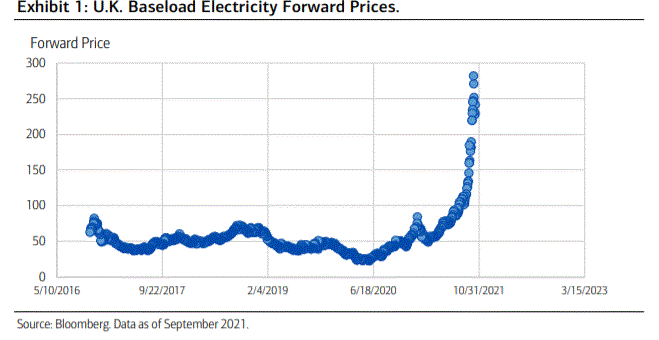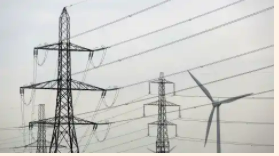Merrill analyser det globale “energi-knas”, som banken kalder de voldsomt stigende priser på energi i denne tid, og kommer med en konklusion, der nærmest går imod tidens grønne ånd: Investorerne skal stadig gå efter de traditionelle energiselskaber, og Merrill anbefaler at overvægte de amerikanske, fordi USA ikke er så afhængig af svingende leverancer og energipriser som Europa. Mange traditionelle selskaber er billige, for der er ikke rift efter el-, olie- og gasproducenter. Det er ikke “in”. Men de står stadig for hovedparten af energiproduktionen, og der vil komme mange investeringer for at undgå de forstyrrelser, der ses i denne tid. Desuden tager det lang tid, før grønne producenter kan tage over efter de traditionelle.
The Global Energy Crunch
Secular transitions from the normal course of business to something new, innovative and
disruptive are inherently volatile, and the current global energy transition is a complex and
secular transition. This dynamic is evident in the recent spike in natural gas, liquefied
natural gas (LNG), coal and retail fuel prices across the U.K., Europe and Asia. Traditionally,
commodity prices are a function of supply and demand, and the current energy crunch is
no different, with strong demand and tight global supplies driving energy prices higher.

The current energy crunch indicates more sound and robust planning and policies are
needed for implementing renewables for baseload power production, including critical
redundant power capacity to back up intermittent renewable power sources.
One problem
Europe is facing is that some countries retired too many coal and nuclear plants too fast
and replaced that retired power output with less consistent power sources, creating less
stability and inconsistent power generation with higher electricity prices for consumers.
Europe is now very dependent on Russia to supply it with increased supplies of natural gas
for power generation and heating this winter.
Importantly, energy price spikes tend to hurt the lower-income and middle-income
consumers, who spend a higher percentage of their income on electricity and heating, the
most. If power production is not well balanced and electric grids do not have stability and
reliability, spikes in power prices or power disruptions (blackouts) can potentially drive
slower consumer spending and slower economic growth.
Portfolio Considerations
For investment and portfolio considerations, we remain overweight the Energy sector in
equity portfolios, given that sentiment for the energy industry remains negative to neutral
at best, with little conviction in the sector. In addition, positioning is still not crowded in
energy stocks, free cash flows and returns of capital to shareholders are increasing, energy
commodity prices are elevated, and relative valuations are attractive.
We prefer U.S.
energy companies over their international peers and would add energy exposure to
portfolios that are underweight energy on pullbacks. This also aligns with our preference
for U.S. Equities over International Developed and Emerging Market equities.
Energy price
uncertainty and volatility may be with us in the coming months on the back of the current
energy crunch; however, there is no doubt the energy transition is in motion and will
continue to make progress as more technology and innovation are applied to battery
storage, carbon capture, renewable fuels and energy infrastructure, but the transition will
not be a quick flip of the switch.



